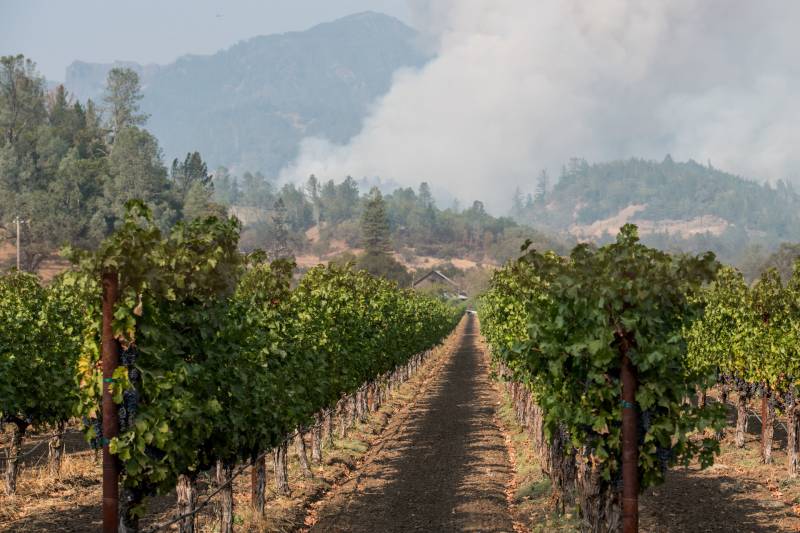Updated 6 p.m. Sunday
Skip to latest evacuation orders and shelter information
Tell us: What do you want to know about wildfire evacuations in a pandemic?
The state reached a grim milestone — over 4 million acres have burned this year by wildfires Cal Fire announced during a Sunday morning briefing. The number is more than double the previous record for the most land burned in a single year.
Cal Fire said the state hit the milestone Sunday with about two months remaining in the fire season. The previous record was set two years ago when wildfires destroyed 1.67 million acres. About 17,000 firefighters are still battling nearly two dozen major blazes throughout the state.
Despite the frightening totals, zeroing in on Glass Fire, some progress had been made over the weekend.
Glass Fire is 26% contained as of Sunday evening, according to Cal Fire, with 64,900 acres burning so far and roughly 235 structures destroyed in Sonoma alone. About 36,000 people remain evacuated, Cal Fire said, meaning some tens of thousands have been able to return home.
Sean Norman, a Cal Fire section chief, sounded an optimistic tone in a briefing Sunday evening.
“We’re feeling good about our lines," he said. "We don’t consider the fire contained or controlled, it’ll be weeks before we get to that benchmark. But that doesn’t mean we feel an imminent threat to any specific community.”
Evacuation orders were reduced to evacuation warnings in parts of Sonoma County, Sunday afternoon, effective 3 p.m. For a full listening of areas downgraded to an evacuation warning, check Cal Fire's post here.
Parts of Lake County were issued evacuation warnings by Cal Fire Sunday afternoon at about 4 p.m., including the areas south of Rancheria Road, East of the Lake/Sonoma County line, north of the Lake/Napa County line, and west of Highway 29, among other areas. For a full listing, check here.
